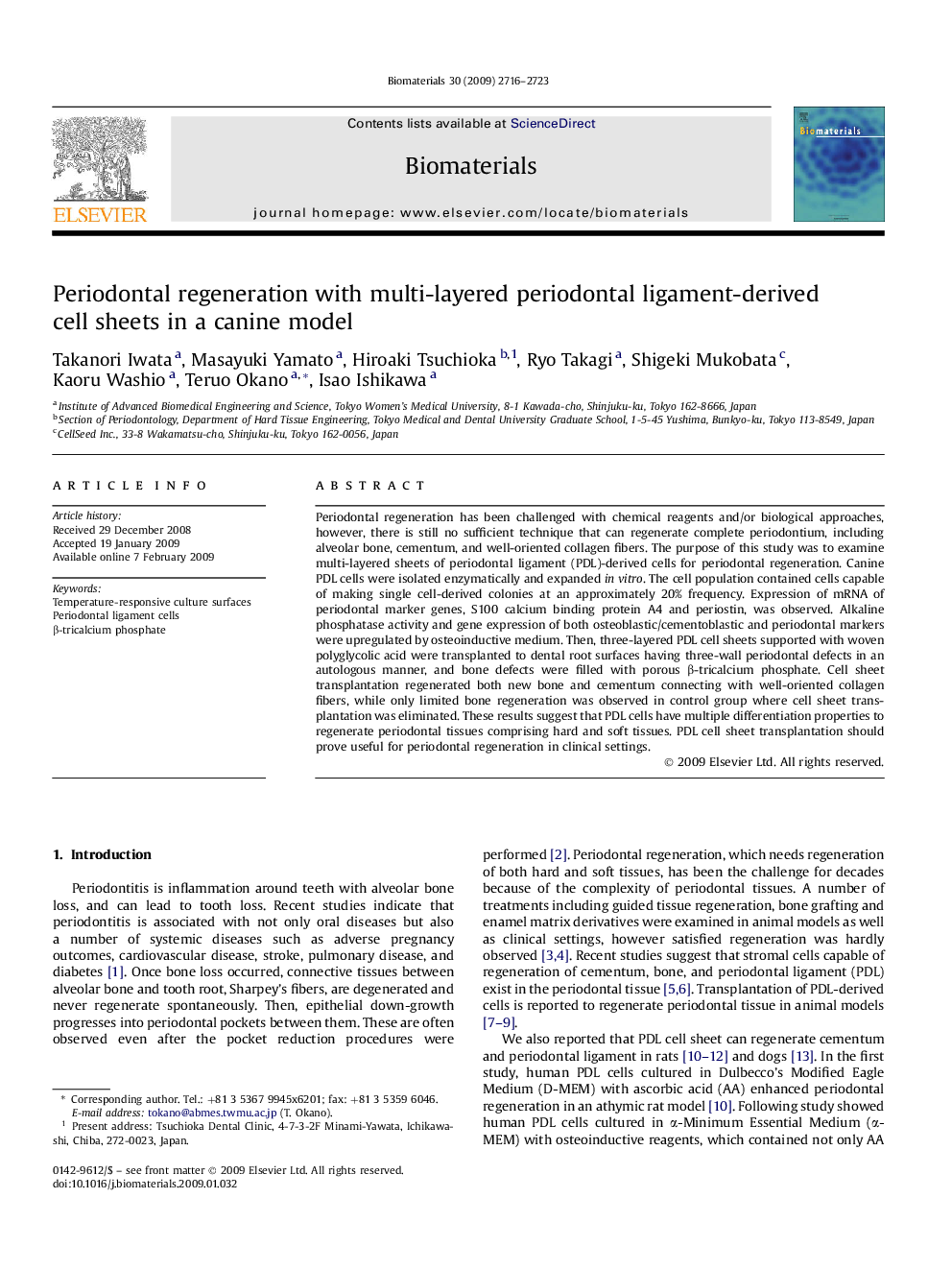| Article ID | Journal | Published Year | Pages | File Type |
|---|---|---|---|---|
| 8818 | Biomaterials | 2009 | 8 Pages |
Periodontal regeneration has been challenged with chemical reagents and/or biological approaches, however, there is still no sufficient technique that can regenerate complete periodontium, including alveolar bone, cementum, and well-oriented collagen fibers. The purpose of this study was to examine multi-layered sheets of periodontal ligament (PDL)-derived cells for periodontal regeneration. Canine PDL cells were isolated enzymatically and expanded in vitro. The cell population contained cells capable of making single cell-derived colonies at an approximately 20% frequency. Expression of mRNA of periodontal marker genes, S100 calcium binding protein A4 and periostin, was observed. Alkaline phosphatase activity and gene expression of both osteoblastic/cementoblastic and periodontal markers were upregulated by osteoinductive medium. Then, three-layered PDL cell sheets supported with woven polyglycolic acid were transplanted to dental root surfaces having three-wall periodontal defects in an autologous manner, and bone defects were filled with porous β-tricalcium phosphate. Cell sheet transplantation regenerated both new bone and cementum connecting with well-oriented collagen fibers, while only limited bone regeneration was observed in control group where cell sheet transplantation was eliminated. These results suggest that PDL cells have multiple differentiation properties to regenerate periodontal tissues comprising hard and soft tissues. PDL cell sheet transplantation should prove useful for periodontal regeneration in clinical settings.
